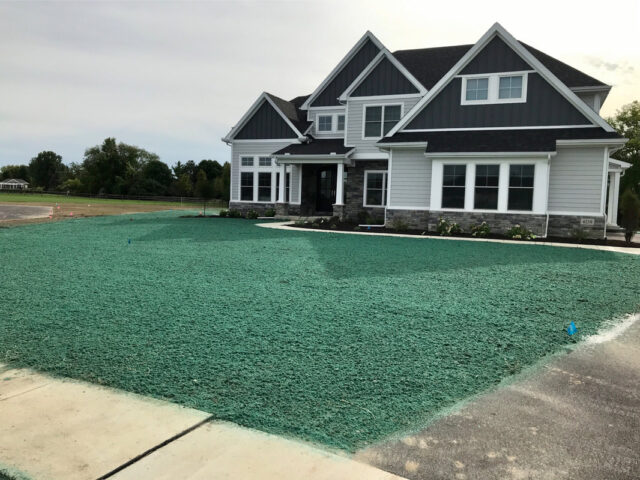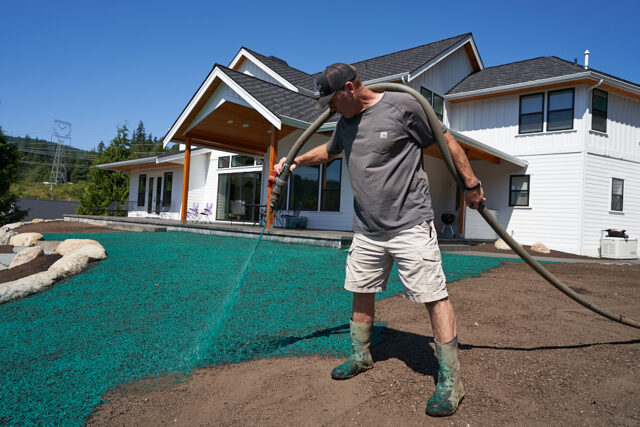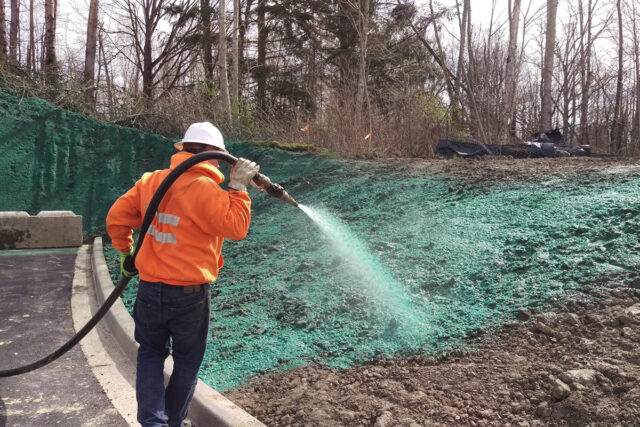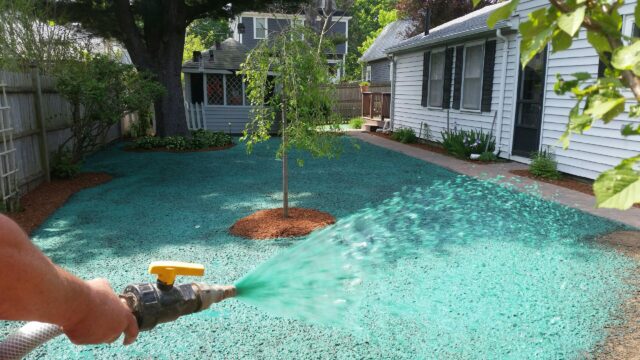
Hydroseeding has transformed the way we approach land reclamation, erosion control, and establishing lush, even grass cover. As a technology that was initially developed for large-scale projects, it’s now accessible to smaller residential areas, with the same promising results. This technique involves spraying a mixture of seed, fertilizer, water, and a protective mulch to provide an ideal environment for seed germination.
What is Hydroseeding?

Hydroseeding, also known as hydraulic mulch seeding or hydraseeding, is a unique planting process that uses a slurry of seed and mulch. The mixture also often includes water, fertilizer, tackifying agents, and green dye. The slurry is sprayed onto the ground to establish vegetation and control erosion. Hydroseeding offers advantages over traditional seeding processes as it promotes rapid germination and inhibits soil erosion. It is commonly used on construction sites, roadsides, landfills, and more recently in residential lawns.
At its core, the success of hydroseeding relies on the combination of elements in the slurry and the process in which it is applied. Various seed types can be used in the mixture, including grasses, legumes, flowers, and trees, allowing for a vast possibility of vegetation types. This mixture is spread evenly across the soil surface in a single step application. The entire process results in a much more efficient and cost-effective method for soil stabilization and achieving plant growth, especially on sloped surfaces and large areas. By understanding the basic principles behind the hydroseeding process, you’ll be better equipped to ensure your lawn’s successful growth and maintenance.
Benefits of Hydroseeding

Harnessing the power of hydroseeding offers a multitude of benefits. Firstly, it’s a cost-effective option, especially when looking to seed large areas. Traditional techniques like hand sowing or using sod can be expensive and labor-intensive. Meanwhile, hydroseeding offers a more economical advantage because it requires fewer resources and less time. Not only is it less costly, but it also enables a uniform distribution of seeds, ensuring an evenly covered lawn.
Additionally, hydroseeding plays a significant role in erosion control. The mulch in the mixture adheres to the soil and provides a protective layer, safeguarding the seeds against erosion by wind or rain. This method also encourages rapid germination. The mix of water, high-quality seeds, fertilizer, and mulch creates an optimal environment for the seeds to sprout. By holding moisture near the seed, hydroseeding promotes faster growth, resulting in a lush, green lawn in a shorter period. The healthy, vibrant established lawn development also outperforms traditional seeding methods, providing aesthetically pleasing results.
Top Tips for Successful Hydroseeding

Choosing the right seed mixture is paramount for your hydroseeding success. The right mix primarily depends on the specific needs of your soil, the local climate, and the purpose of the lawn. Your lawn could be for aesthetic appeal, sports, or erosion control. Each purpose calls for a different type of grass, so you should seek professional advice if unsure. For instance, areas with high foot-traffic may require more durable grass varieties.
Timing is also essential. The ideal time to hydroseed is during the periods of the year when temperatures are moderate, mainly in the spring or early fall. Excessively hot or cold temperatures may hinder seed germination. Also, remember that newly hydroseeded lawns need proper care, which includes keeping a regular watering schedule. In the first couple of weeks after hydroseeding, make sure that the lawn remains moist. Use a sprinkler system if possible for thorough, controlled watering. After the grass germinates, you can water less frequently but more deeply. Additionally, avoid foot traffic on your newly seeded lawn, allowing the grass to fully establish. Following these essential tips set a firm foundation for a prosperous, lush lawn.
The Role of Climate in Hydroseeding

Climate plays a significant role when it comes to successful hydroseeding. Temperature, in particular, can greatly affect the germination process. Most grass seeds thrive in moderate temperatures. During excessively hot or cold periods, the seeds may struggle to germinate and establish. Hence, it is recommended to hydroseed in the early spring or fall when the temperatures are milder. Conversely, hydroseeding during the height of summer or the dead of winter may not yield optimal results.
Rain and wind are two other climatic factors you should consider. While rain can be an asset, as it provides the necessary water for seed germination and growth, too much of it may wash away the hydroseed mixture leading to uneven distribution of grass or bare patches. Wind, on the other hand, can dry out the mulch prematurely, resulting in slower germination or the failure of the seeds to take root. Leaving the seeds exposed may also attract birds, significantly decreasing the hydroseeding’s success rate. Therefore, understanding your local climate conditions, avoiding adverse weather, and adjusting your care schedules accordingly will significantly enhance your hydroseeding success.
At the end of the day, the success of hydroseeding lies in attention to detail and proper care. In this guide, we shared top tips for successful hydroseeding, aimed at helping you understand every step of the process. We hope these insights prove beneficial and wish you every success in your hydroseeding endeavor. Remember, every green, lush lawn starts with a single seed – make yours count with hydroseeding.






